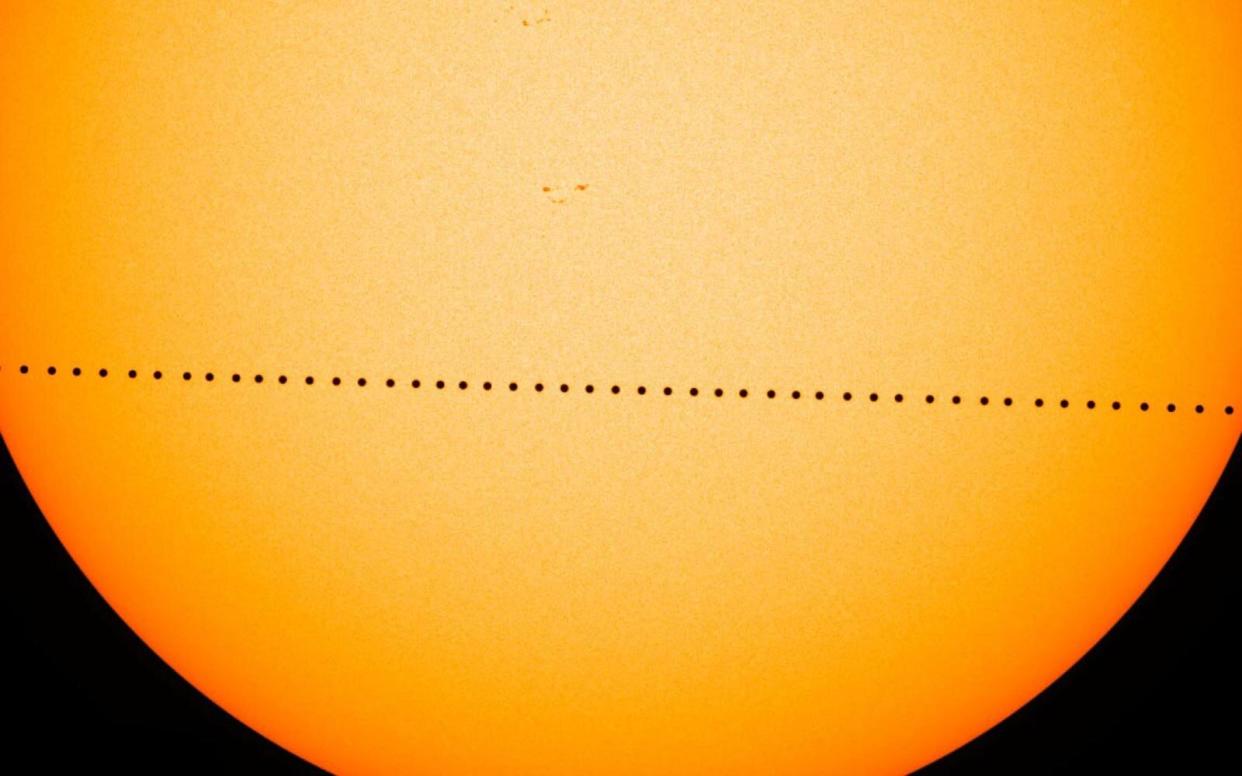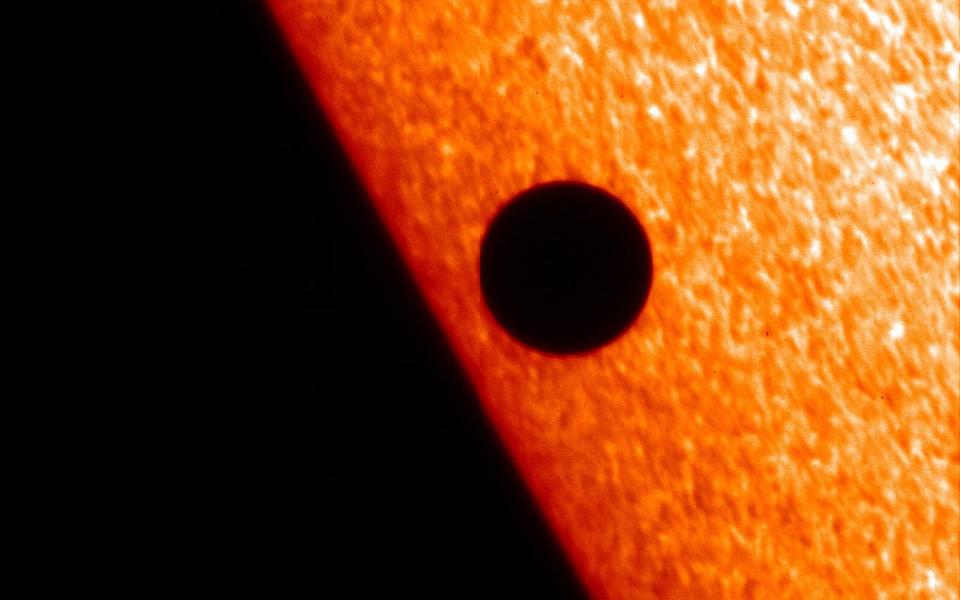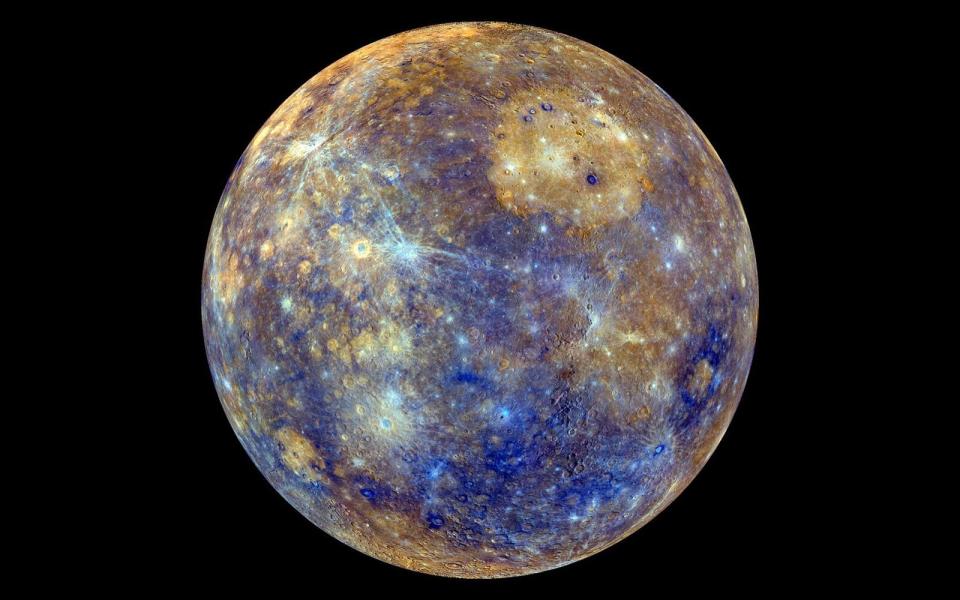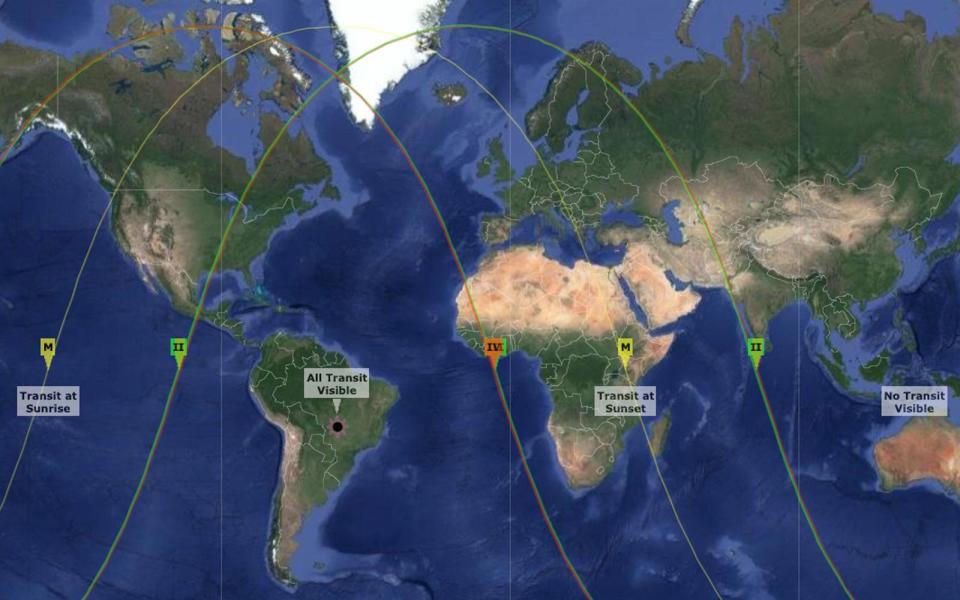Mercury Will Make a Rare 'Transit' of the Sun on Monday — and It Won't Happen Again for 13 Years

Courtesy of NASA's Goddard Space Flight Center/SDO/Genna Duberstein
There is no rarer predictable celestial event than a planet crossing the sun, yet that’s precisely what will happen over five and a half hours on Monday when the tiny planet Mercury “transits” our star, the sun.
What is the transit of Mercury?

Courtesy of Hinode JAXA/NASA/PPARC
It’s when Mercury gets precisely between Earth and the sun, so from here we can see a black dot appear to cross the sun. In five and a half hours, the planet Mercury will cross the sun’s disk from east to west.
Planetary transits like this are far rarer than eclipses. This will be the first transit of Mercury since 2016, and the last until November 13, 2032. They happen 13 times per century.

Courtesy of NASA/Johns Hopkins University Applied Physics Laboratory/Carnegie Institution of Washington
When are the next transits of Venus, Mars, Jupiter, Saturn, Neptune and Uranus?
Since Earth is the third planet from the sun, we can only see the inner planets, Mercury and Venus, transit the sun. The rest of the planets never get between Earth and the sun. However, from Mars, Jupiter, Saturn, Neptune, and Uranus it’s possible to a see a transit of Earth across the sun. The last transit of Venus was in 2012 and the next one is not until 2117—98 years!
When is the transit of Mercury?
The action begins on November 11, 2019 at 12:34 p.m. UTC, which is 7:34 a.m. ET and 4:34 a.m. PT. Get the exact timings for the transit of Mercury for where you live.
What do you need to view Mercury's transit?
You don’t need to witness the entire event—a short observation will do fine. Ideally you’re going to need to look through a telescope fitted with a solar filter. You can do that yourself if you have any kind of backyard telescope, or some binoculars (buy a sheet of Baader Astro Solar Film and make yourself a solar filter), or you can visit a local observatory, which may be staging a public event. However, if you have any solar eclipse glasses leftover from 2017’s “Great American Eclipse”, try having a look—you should be able to see the black dot of Mercury on the sun. Just be careful not to look at the sun with the naked eye.
Where are the best places to see the transit of Mercury?
North America, South America, West Africa, and northwestern Europe are best positioned to see at least some of November’s transit of Mercury (here’s an excellent Google Map with local timings). The very best place to watch the transit of Mercury is the Atacama desert in Chile. As well as being bang in the center of the eclipse track (the epicenter is actually in Brazil), the Atacama desert gets almost zero rain and very few clouds.

Courtesy of Xavier Jubier/Google Maps
When is the best time to watch the transit of Mercury from the U.S. East Coast?
In North America, the East Coast is by far the best place to view Mercury's transit in terms of the timing. There, the event will begin at 7:37 a.m. in the southeastern sky and end at 1:02 p.m. in the southern sky, so the entire event will happen in daylight (since Mercury is crossing the Sun, that’s really important!).
When is the best time to watch the transit of Mercury from the U.S. West Coast?
On the West Coast of the U.S., the event is already underway by sunrise around 6.23 a.m. PT, though the second half of the event will be visible in the southeastern sky, ceasing at 10:04 a.m. PT. However, there’s more chance of a clear sky in the western half of the U.S., which would be best for viewing conditions.

